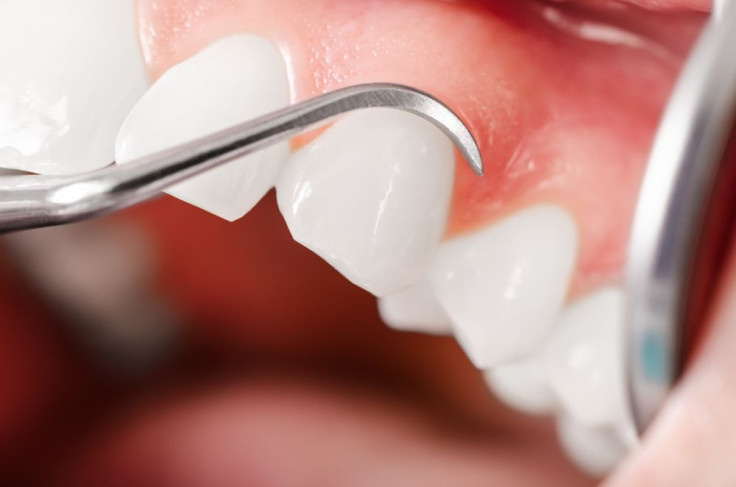South Korean Woman With Black Gums Gets Diagnosed With Rare Skin Cancer In Mouth

A blow to the mouth landed a woman in the hospital but ultimately saved her life in South Korea. Doctors conducted a dental X-ray and found no bone destruction, but something rare: diffused black pigmentation on both her upper gums and the roof of her mouth. The 60-year-old woman, a lifelong non-smoker and non-drinker, was diagnosed with oral malignant melanoma — skin cancer of the mouth — after suffering from discolored gums for two months, according to the case report published in The New England Journal of Medicine.
“Primary malignant melanoma is uncommon in the oral cavity,” wrote the doctors in the case report. “Unfortunately, diagnosis may be delayed because oral malignant melanomas are frequently asymptomatic and painless in their early stages.”
Oral malignant melanoma is a rare disease. These melanomas are believed to arise due to the melanocytes — the pigment-producing cells of the body — that are present in the mucosal areas of the body, including the sinuses, nasal passages, and oral cavity, among other areas, according to the Mayo Clinic. Their ability to evolve into cancerous cells can lead to malignant melanoma.
This rare skin cancer is unrelated or unaffected by UV exposure, unlike most cases of skin cancer. It also has no apparent relationship to chemical, thermal, or physical events, such as smoking, alcohol intake, or poor hygiene, as seen by the patient in the case report. Moreover, doctors still have trouble deciphering the sequence of events in the oral cavity.
The woman’s oral pigmentation is common among patients with oral malignant melanoma. Patients often see the pigments — ranging from light brown to blue-black, red, or purple — develop for months and even years before they receive a diagnosis. However, there is a delay in detecting this cancer, since it has no symptoms and is painless in its early stages.

In this case, the doctors used computed tomography to spot the hypermetabolic signal that was seen in the woman’s anterior maxillary area, or the roof of the mouth without spreading to her lymph nodes. The lesion was cut out of her mouth and she received chemotherapy. However, in a 26-month follow-up after the initial diagnosis, the cancer returned and spread to other areas of the body.
In a similar case report published in the Journal of Indian Society of Periodontology, doctors discovered a hyperpigmented lesion of a 42-year-old male patient. Like the woman, he experienced darkening of the gums adjacent to his pink gums. He did not have a history of smoking or usage of smokeless tobacco, or alcohol intake.
Oral melanoma is often overlooked and clinically misinterpreted until it’s in the late stages. This means prognosis is poor with a five-year survival rate in the range of 10 to 25 percent. The median survival rate is less than two years.
Although rare, skin cancer is a silent but deadly killer.
Sources: Song J. Intraoral Malignant Melanoma. NEJM. 2015.
D’souza J and Padhye A. Oral malignant melanoma: A silent killer? J Indian Soc Periodontol. 2011.



























